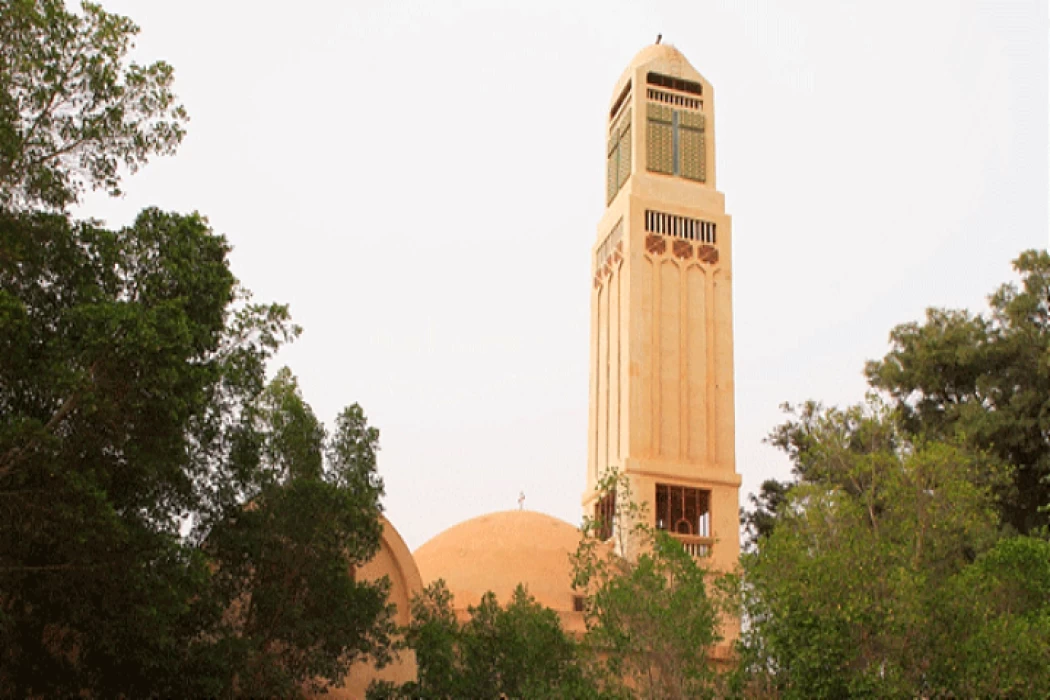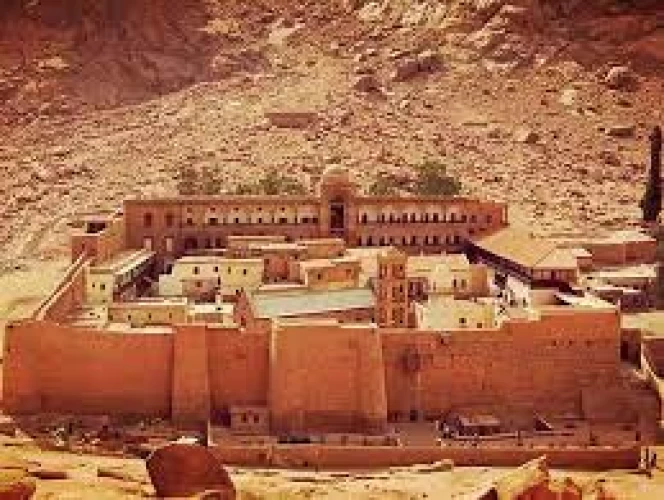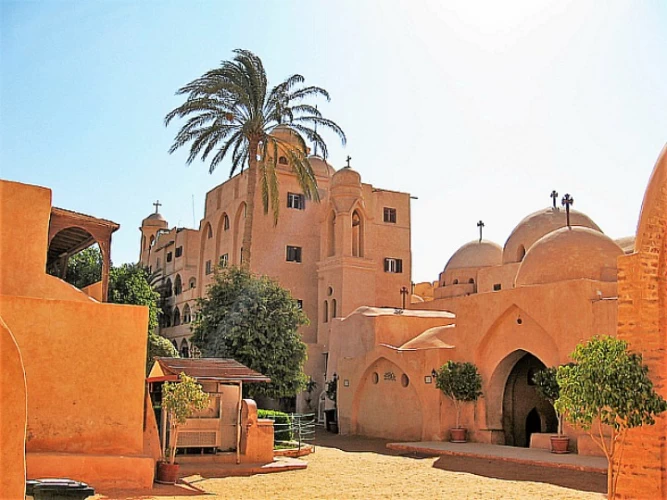
埃及的纳特伦谷
瓦迪纳特伦在埃及
瓦迪*纳特伦(Wadi al-Natrun)是贝希拉省的城市之一,位于埃及西部沙漠的东北郊,位于连接开罗和亚历山大的沙漠公路中间,面向萨达特市。
瓦迪纳特伦不是众所周知的意义上的山谷,但它在西部沙漠中很低。瓦迪纳特伦北部与Abu Al-Matamir中心和Badr中心接壤,东部是萨达特市,而al-土耳其浴室中心位于马特鲁省,在这个大萧条的西部,最后在它的南部是10月6日的城市。
这个名为瓦迪纳特伦的地区在法老时代非常重要,因为盐是从这片土地上提取的,被称为Natron的盐,科学上称为碳酸氢钠。 胡克,盐田,和其他这样的名字。
他在基督教中也获得了很高的神圣声誉,这是因为圣家族通过他逃离希律王,直到公元四世纪,他在建立Anba Makar修道院的伟大总部的手中,然后是其他三所修道院,即Anba Bishoy修道院和El-Baramos修道院和修道院
叙利亚,直到修道院的数量达到700修道院在山谷中,直到他们开始缩小到现在只有四个修道院,而其余的都丢失了,所以山谷被认为是埃及科普特东正教信徒最重要的神圣地区之一。
Wadi El-Natrun的旅游业集中在许多科普特纪念碑中,修道院开始于雕刻在山上的小村庄,然后对隐士施加自然条件以建立收敛的复合体,并从这里开始聚集在修道院内以保护免受野蛮袭击的想法,因为每个修道院都建立了内部堡垒,到目前为止它们仍然是一个名单,并且大量的基督徒已经在里面避难以逃避罗马人的不满。 伊斯兰征服埃及后,僧侣和纳特伦来到阿拉伯领导人阿姆尔*伊本*阿斯(Amr ibn al-Aas)面前,因此他为他们的生命和崇拜自由提供了保险,并亲自为他们提供所需要的东西。
哈姆拉湖(Lake Hamra)或阿尤布湖(Ayoub's)及其人民称之为吸引游客进行医疗旅游,因为它以其高盐度和专门针对皮肤病患者的治疗特性而着称。.这个湖位于沙漠公路的中间,连接着亚历山德里亚和开罗的瓦迪纳特伦地区。
干旱的沙漠拥抱着那个以极端盐度为特征的湖泊。 在这个湖的中央,一只眼睛从那里迸发出最甜,最健康的食物来源,具有治愈皮肤病的神奇能力。 由于这种甜水在这个极咸的地方流动,形成了一个辉煌的彩色渐变板,宣布了造物主的力量。
Wadi al-Natrun is one of the cities of Beheira Governorate, located on the northeastern outskirts of the Egyptian Western Desert, about halfway between the desert road linking Cairo and Alexandria, and facing the city of Sadat.
Wadi El-Natrun is not a valley in the well-known sense, but it is low in the Western Desert. Wadi El-Natrun borders to the north the Abu al-Matamir Center and the Badr Center, and to the east is the city of Sadat, while the center of al-Hammam is located in the Matruh Governorate, west of this depression, and finally to the south of it is the city of the Sixth of October.
This area called Wadi Al-Natroun was of great importance during the era of the Pharaohs, as the salt was extracted from this land and called the salt of the Natron known scientifically as sodium bicarbonate. Hooker, salt field, and other such names.
He also obtained a high holy reputation in Christianity, as a result of the passage of the Holy Family through him to escape from King Herod until he reached the first monastic congregation in it in the fourth century AD, at the hands of the great headquarters that established the monastery of Anba Makar and then followed by three other monasteries, namely the Monastery of Anba Bishoy and the Monastery of El-Baramos and the Monastery of Syrian, until the number of monasteries reached 700 monasteries in the valley until they started shrinking to now only four monasteries, while the rest were lost, so the valley is considered one of the most important sacred areas for followers of the Egypt Coptic Orthodox Church.
Tourism in Wadi El-Natrun is concentrated in many Coptic monuments, where monasticism began in small villages engraved in the hills, then natural conditions were imposed on the hermits to set up converging complexes, and from here began the idea of gathering inside monasteries to protect from barbaric raids, as internal fortresses were established in each monastery and they are still A list exists so far, and a large number of Christians have taken refuge in it to escape the grievances of the Romans. After the Islamic conquest of Egypt, monks and Natron came to the Arab leader, Amr ibn al-Aas, so he insured them on their lives and the freedom of their worship and took it upon himself to provide them with what they needed.
Lake Hamra or Ayoub's well as its people call it attracts visitors for medical tourism because it is distinguished by its high salinity and its healing properties specifically for patients with skin diseases..and this lake is located in the middle of the desert road linking the cities of Alexandria and Cairo in the Wadi Natrun region.
The arid desert embraces that lake, which is characterized by extreme salinity. In the middle of this lake, an eye bursts out from which a source of the sweetest and most healthy food with a miraculous ability to heal skin diseases explodes. As a result of the flow of this sweet water on this extremely salty spot, a brilliant colored gradient plate is formed, announcing the power of the Creator.
The most significant monasteries in the region of Wadi El Natrun:
- Monastery of Anba Bishoy:
The Monastery of Anba Bishoy is the largest of the monasteries in Wadi El Natrun. This monastery is named after Anba Bishoy, a disciple of Anba Macarius.
-Monastery of Baramous:
The name of Baramous Monastery goes back to Saints Maximus and Domatius of Rome, two Roman fathers of the fourth century AD.
-Monastery of Abu Macarius
-Monastery of the Virgin Mary of the Syrians
The Monastery of the Virgin Mary of the Syrians is one of the four monasteries remaining in Wadi El Natrun in the Western Desert of Egypt, and it is also the smallest.
This monastery was found in the sixth century AD and was first called “Our Lady of Anba Bishoy” as some monasteries with a double name had been established. The monks established a church next to each main monastery.


















